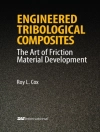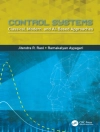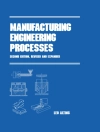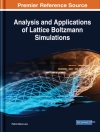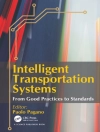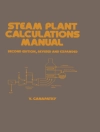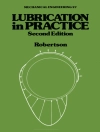Computational Optimal Control: Tools and Practice provides a
detailed guide to informed use of computational optimal control in
advanced engineering practice, addressing the need for a better
understanding of the practical application of optimal control using
computational techniques.
Throughout the text the authors employ an advanced aeronautical
case study to provide a practical, real-life setting for optimal
control theory. This case study focuses on an advanced, real-world
problem known as the ‘terminal bunt manoeuvre’ or
special trajectory shaping of a cruise missile. Representing the
many problems involved in flight dynamics, practical control and
flight path constraints, this case study offers an excellent
illustration of advanced engineering practice using optimal
solutions. The book describes in practical detail the real and
tested optimal control software, examining the advantages and
limitations of the technology.
Featuring tutorial insights into computational optimal
formulations and an advanced case-study approach to the topic,
Computational Optimal Control: Tools and Practice provides
an essential handbook for practising engineers and academics
interested in practical optimal solutions in engineering.
* Focuses on an advanced, real-world aeronautical case study
examining optimisation of the bunt manoeuvre
* Covers DIRCOL, NUDOCCCS, PROMIS and SOCS (under the GESOP
environment), and BNDSCO
* Explains how to configure and optimize software to solve
complex real-world computational optimal control problems
* Presents a tutorial three-stage hybrid approach to solving
optimal control problem formulations
Tabela de Conteúdo
Preface
Acknowledgements
Nomenclature
1 Introduction
1.1 Historical Context of Computational Optimal Control
1.2 Problem Formulation
1.3 Outline of the Book
2 Optimal Control: Outline of the Theory and
Computation
2.1 Optimisation: From Finite to Infinite Dimension
2.2 The Optimal Control Problem
2.3 Variational Approach to Problem Solution
2.4 Nonlinear Programming Approach to Solution
2.5 Numerical Solution of the Optimal Control Problem.
2.6 Summary and Discussion
3 Minimum Altitude Formulation
3.1 Minimum Altitude Problem
3.2 Qualitative Analysis
3.3 Mathematical Analysis
3.4 Indirect Method Solution
3.5 Summary and Discussion
4 Minimum Time Formulation
4.1 Minimum Time Problem
4.2 Qualitative Analysis
4.3 Mathematical Analysis
4.4 Indirect Method Solutions
4.5 Summary and Discussion
5 Software Implementation
5.1 DIRCOL implementation
5.2 NUDOCCCS Implementation
5.3 GESOP (PROMIS/SOCS) Implementation
5.4 BNDSCO Implementation
5.5 User Experience
6 Conclusions and Recommendations
6.1 Three-stage Manual Hybrid Approach
6.2 Generating an Initial Guess: Homotopy
6.3 Pure State Constraint and Multi-objective Formulation
6.4 Final Remarks
Appendix BNDSCO Benchmark Example
A.1 Analytic Solution
A.1.1 Unconstrained or Free Arc (l >=1/4)
A.1.2 Touch Point Case (1/6
Sobre o autor
Dr S Subchan, Cranfield University, UK
Dr Subchan is a research officer in the Department of Aerospace, Power and Sensors at Cranfield University’s Shrivenham campus. He studied for his Ph D at Cranfield in 2005, having previously worked for 3 years for Indonesian Aircraft Industries at Bandung on computational fluid dynamics.
Dr Rafal Zbikowski, Cranfield University, UK
Dr Zbikowski is Reader in Control Engineering and is a Principal Research Officer in the Guidance and Control Group of the Department of Aerospace, Power and Sensors at Cranfield University’s Shrivenham campus. Prior to this he was a Post-Doctoral Research Fellow at Glasgow University leading the Glasgow side of a joint project with Daimler-Benz on neural adaptive control technology for Mercedes products. Dr Zbikowski has published over fifty papers on adaptive and nonlinear aspects of intelligent control, and flapping wing micro air vehicles. A control engineer with a strong mathematical background, he is a member of the American Mathematical Society (AMS) and the Institute of Electrical and Electronics Engineers (IEEE). Since 1998 he has been instrumental in obtaining UK funding for four substantial projects in the area of guidance and control.



